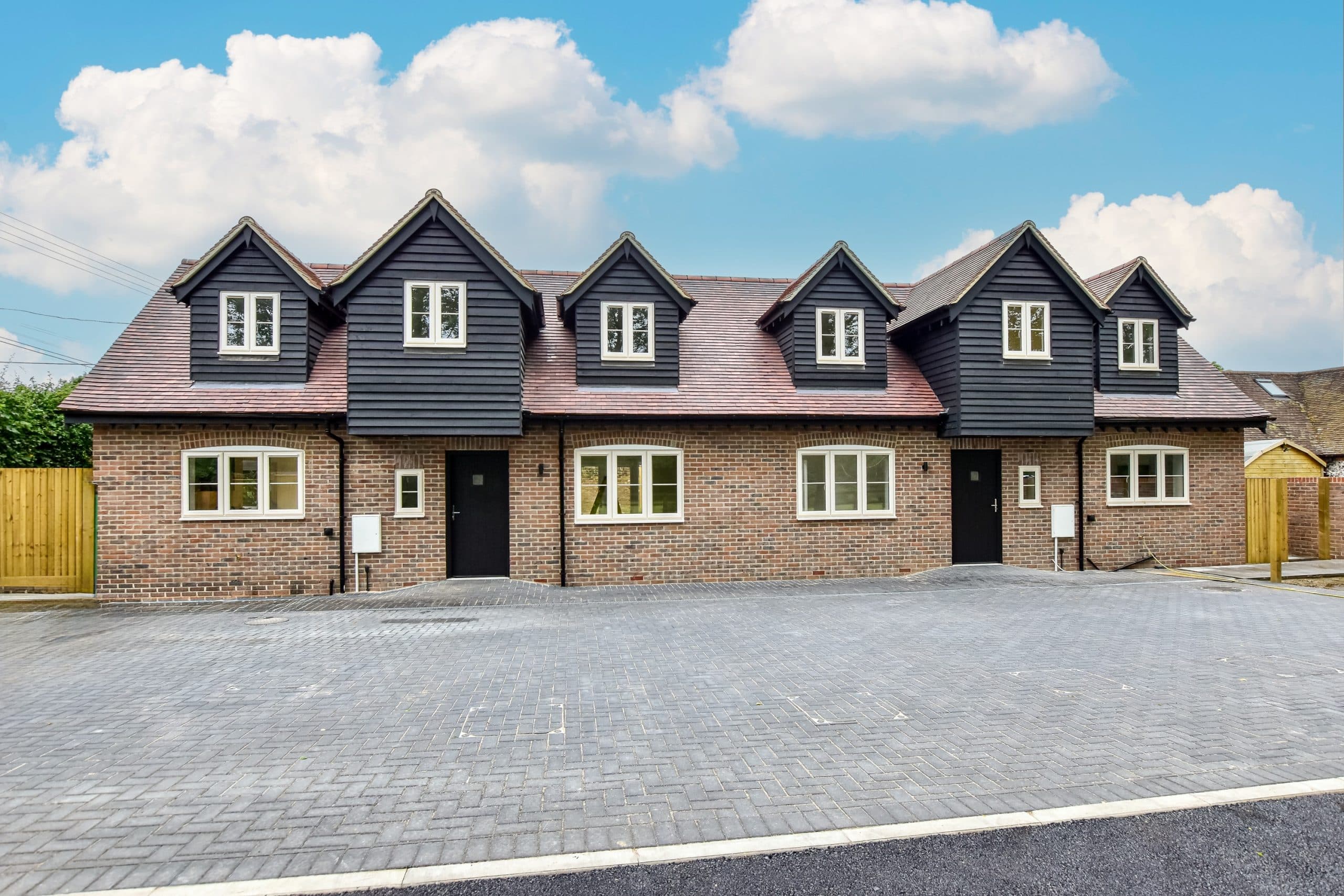Here in the South East of the UK, we’re blessed with a range of stunning landscapes and areas of Outstanding Natural Beauty such as the Surrey Hills, High Weald, Kent Downs and, of course, the South Downs National Park. This idyllic scenery, coupled with the proximity to London and other major urban areas like Brighton, Portsmouth, and Southampton, as well as easy access to Europe, make it a highly desirable place to live. Consequently, property prices are among the highest in the UK, and property developers are eager to tap into this reliable demand.
However, building within the confines of a National Park, an AONB or a conservation area can come with a range of regulations that go above normal planning permission. These additional regulations can affect your project in a variety of ways from increasing costs and fees, to changing proposed designs, and up to outright refusal. However, all is not lost and it is certainly possible to undertake successful, profitable projects in the South Downs, an AONB or a Conservation Area.
In this guide, we’re going to explore some of the specific regulations that may affect your proposed project and the various considerations you need to factor in.
Planning Regulations in the South Downs National Park
The South Downs National Park, designated in 2010 for its outstanding natural beauty, rolling chalk hills, white cliffs, and unique cultural heritage, has stricter regulations regarding property development compared to other areas in Sussex. For example:
- Planning permission is generally required for most property development projects, even for minor alterations or extensions. This includes householder-permitted development rights, which don’t apply within the National Park. In short, some permitted developments that would not normally need planning permission in ‘normal’ areas, such as the installation of solar panels or the changing of windows, may still require it within the South Downs.
- The South Downs Local Plan 2014-2033 outlines the specific policies and guidelines for development within the park. It emphasises sustainable development, protecting the landscape, and promoting affordable housing. Specifically, there are three main purposes of the plan:
- To conserve and enhance the natural beauty, wildlife and cultural heritage of the area.
- To promote opportunities for the understanding and enjoyment of the special qualities of the National Park by the public.
- To seek to foster the social and economic well-being of the local communities within the National Park in pursuit of our purposes.
- Additional restrictions might apply depending on the location of your proposed project within the park. For example, development near sensitive ecological areas or listed buildings will face stricter scrutiny and will be harder to secure planning consent.
Property Development Regulations in an AONB or Conservation Area
Areas of Outstanding Natural Beauty
Planning permission rules in Areas of Outstanding Natural Beauty (AONBs) are stricter than in other areas to protect the natural beauty and environmental significance of these landscapes but will be less strict than in a national park. AONBs often follow these general principles:
- Any development must demonstrate how it conserves and enhances the natural beauty of the AONB. This is the primary consideration for planning permission.
- Your local planning authority makes the final decision, but Natural England advises and can object to proposals that harm the AONB.
- Like national parks, limited permitted development rights, which allow certain work without permission, are more restricted in AONBs. Even minor works like extensions might require permission from the planning authority.
Special considerations include:
- New houses: Building new houses in open countryside will be harder to get approved. They must be essential and not harm the character of the AONB.
- Design: Designs should be sympathetic to the surrounding landscape, using local materials and minimising visual impact.
- Extensions: Rear extensions up to 4 metres for detached houses (3 metres for others) might be allowed under permitted development, but side extensions and larger projects will almost certainly require permission.
- Converting agricultural buildings: Strict rules apply to converting agricultural buildings into living or commercial spaces.
- Public access: Proposals may need to include improvements to or preservation of public access as part of the development.
Conservation Areas
Conservation areas are designated to protect the special architectural and historic character of specific neighbourhoods or villages. Regulations here are less stringent than in the National Park or AONB, but still stricter than in regular areas:
- Demolishing a building within a conservation area often requires planning permission.
- Modifications to the exterior of buildings might also require permission, especially if they impact the overall character of the area.
- Tree preservation orders often apply in conservation areas, restricting tree felling or pruning without permission.
- Regulations might vary depending on the specific conservation area and its unique character. We always recommend engaging with your local planning authority for accurate information regarding any restrictions.
If you’re considering a property development project in an area with stricter planning controls, you may have to pay more consideration to the rules and plan accordingly. This may have knock-on effects on your budgets and your timescales.
However, there is no reason why building in a national park, AONB or conservation area should impact a lender’s decision in providing development finance. As long as the project is viable and well-planned, then it will remain an attractive proposition to lenders, developers and buyers alike.
We offer development finance, bridging loans and equity finance to developers across the South East. Contact us today to find out how we can help fund your next project.





